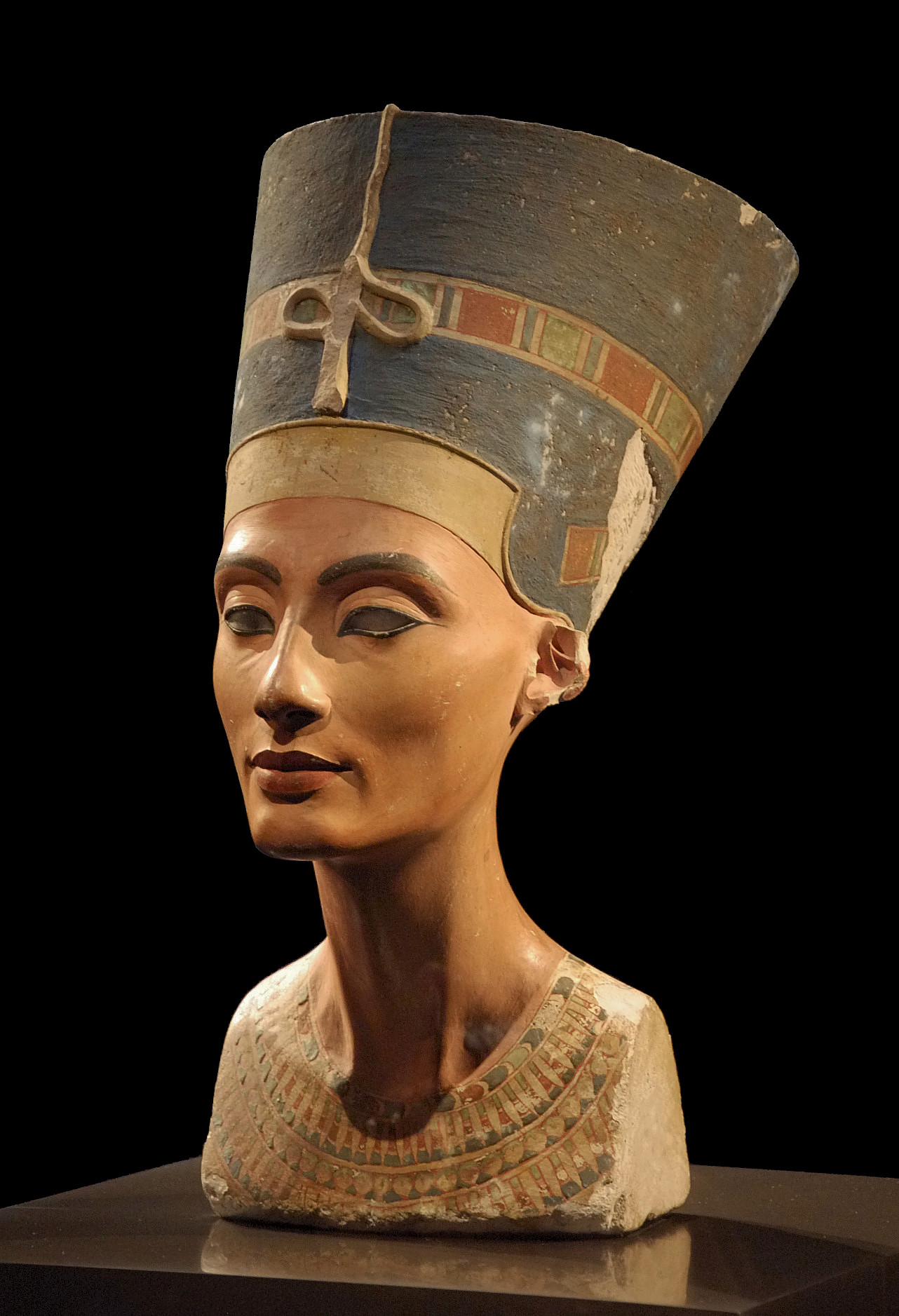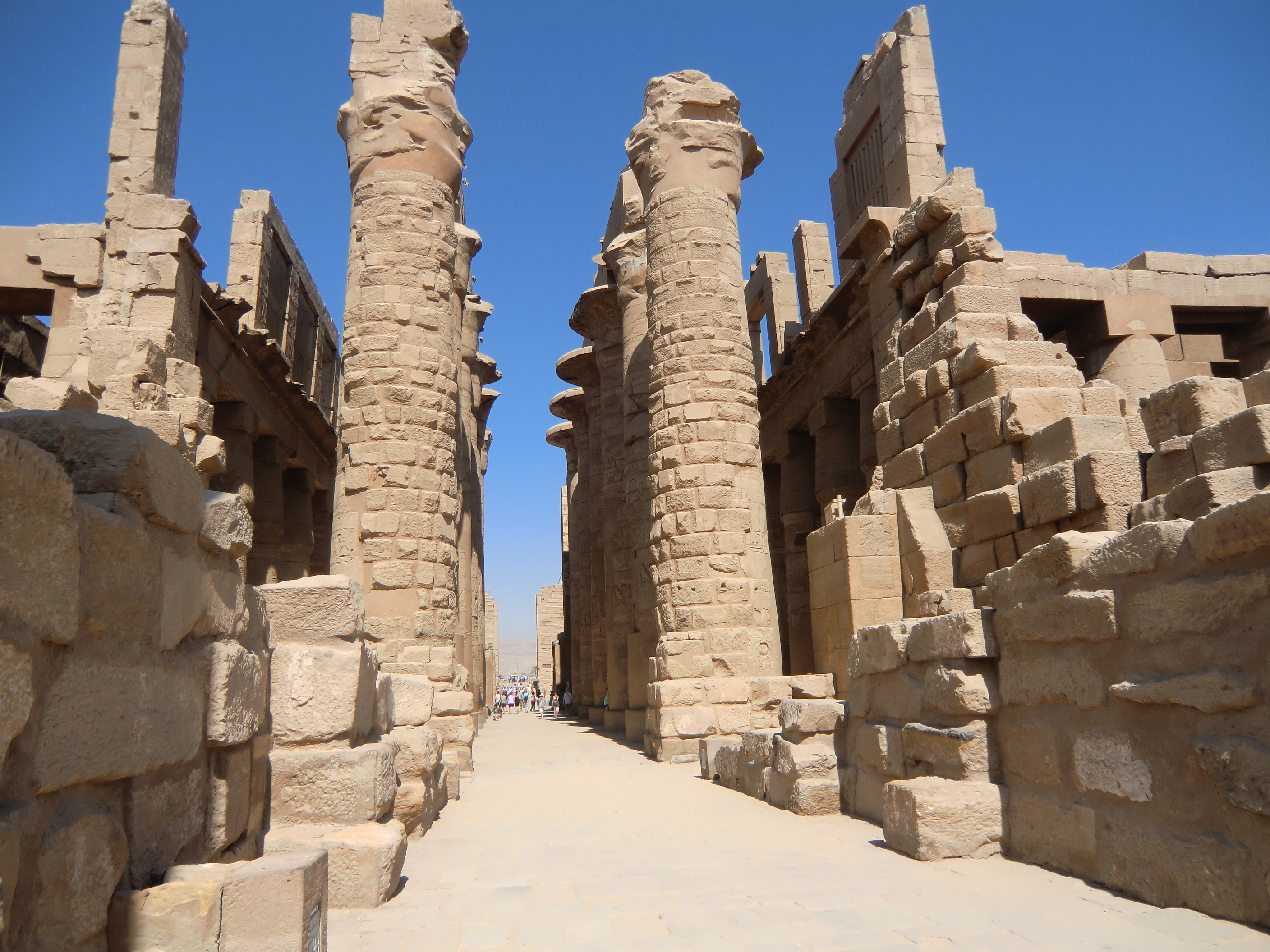|
Theban Triad
The Theban Triad is a triad of Egyptian gods most popular in the area of Thebes, Egypt. The triad The group consisted of Amun, his consort Mut and their son Khonsu. They were favored by both the 18th and 25th Dynasty. At the vast Karnak Temple Complex, these gods constituted the primary objects of worship. Other temples and shrines also exist throughout Egypt, such as the one at Deir el-Hagar, close to the Dakhla Oasis. Amenhotep I, the pharaoh Pharaoh (, ; Egyptian language, Egyptian: ''wikt:pr ꜥꜣ, pr ꜥꜣ''; Meroitic language, Meroitic: 𐦲𐦤𐦧, ; Biblical Hebrew: ''Parʿō'') was the title of the monarch of ancient Egypt from the First Dynasty of Egypt, First Dynasty ( ... who built Karnak, was often depicted amongst these gods. References External links {{Ancient Egyptian religion footer, collapsed Thebes, Egypt Groups of Egyptian deities Egyptian gods Amun Triple deities ... [...More Info...] [...Related Items...] OR: [Wikipedia] [Google] [Baidu] |
Theban Triad On Barge .
{{Disambig ...
Theban can refer to: * A thing or person of or from the city of Thebes, Greece. * A thing or person of or from the city of Thebes, Egypt. * A player from the Caledonian Thebans RFC. * The occult Theban alphabet The Theban alphabet, also known as the witches' alphabet, is a writing system, specifically a substitution cipher of the Latin script, that was used by early modern occultists and is popular in the Wicca movement. Publication history It was f ... [...More Info...] [...Related Items...] OR: [Wikipedia] [Google] [Baidu] |
Triad (religious)
A triad, in a religious context, refers to a grouping of three gods, usually by importance or similar roles. A triad of gods were usually not considered to be one in the same being, or different aspects of a single deity as in a Trinity or Triple deity. Triads of three closely associated deities were commonly found throughout the ancient world, and in particular in the religious traditions of Ancient Greece and Egypt. List of deity triads Historical polytheism * The Classical Greek Olympic triad of Zeus ( king of the gods), Athena (goddess of war and intellect) and Apollo (god of the sun, culture and music) * The Delian chief triad of Leto (mother), Artemis (daughter) and Apollo (son) and second Delian triad of Athena, Zeus and Hera * The Eleusinian Mysteries centered on Persephone (daughter), Demeter (mother), and Triptolemus (to whom Demeter taught agriculture) * In ancient Egypt there were many triads: ** The Osirian (or Abydos) triad of Osiris (husband), Isis (wife), and Hor ... [...More Info...] [...Related Items...] OR: [Wikipedia] [Google] [Baidu] |
Egyptian Gods
Ancient Egyptian deities are the gods and goddesses worshipped in ancient Egypt. The beliefs and rituals surrounding these gods formed the core of ancient Egyptian religion, which emerged sometime in prehistory. Deities represented natural forces and phenomena, and the Egyptians supported and appeased them through offerings and rituals so that these forces would continue to function according to '' maat'', or divine order. After the founding of the Egyptian state around 3100 BC, the authority to perform these tasks was controlled by the pharaoh, who claimed to be the gods' representative and managed the temples where the rituals were carried out. The gods' complex characteristics were expressed in myths and in intricate relationships between deities: family ties, loose groups and hierarchies, and combinations of separate gods into one. Deities' diverse appearances in art—as animals, humans, objects, and combinations of different forms—also alluded, through symbolism ... [...More Info...] [...Related Items...] OR: [Wikipedia] [Google] [Baidu] |
Thebes, Egypt
Thebes (, , ''Thēbai''), known to the ancient Egyptians as Waset, was an ancient Egyptian city located along the Nile about south of the Mediterranean. Its ruins lie within the modern Egyptian city of Luxor. Thebes was the main city of the fourth Upper Egyptian nome (Sceptre nome) and was the capital of Egypt for long periods during the Middle Kingdom and New Kingdom eras. It was close to Nubia and the Eastern Desert, with its valuable mineral resources and trade routes. It was a religious center and the most venerated city during many periods of ancient Egyptian history. The site of Thebes includes areas on both the eastern bank of the Nile, where the temples of Karnak and Luxor stand and where the city was situated; and the western bank, where a necropolis of large private and royal cemeteries and funerary complexes can be found. In 1979, the ruins of ancient Thebes were classified by UNESCO as a World Heritage Site. Toponymy The Egyptian name for Thebes was ''w� ... [...More Info...] [...Related Items...] OR: [Wikipedia] [Google] [Baidu] |
Amun
Amun was a major ancient Egyptian deity who appears as a member of the Hermopolitan Ogdoad. Amun was attested from the Old Kingdom together with his wife Amunet. His oracle in Siwa Oasis, located in Western Egypt near the Libyan Desert, remained the only oracle of Amun throughout. With the 11th Dynasty ( BC), Amun rose to the position of patron deity of Thebes by replacing Montu. Initially possibly one of eight deities in the Hermapolite creation myth, his worship expanded. After the rebellion of Thebes against the Hyksos and with the rule of Ahmose I (16th century BC), Amun acquired national importance, expressed in his fusion with the Sun god, Ra, as Amun-Ra (alternatively spelled Amon-Ra or Amun-Re). On his own, he was also thought to be the king of the gods. Amun-Ra retained chief importance in the Egyptian pantheon throughout the New Kingdom (with the exception of the " Atenist heresy" under Akhenaten). Amun-Ra in this period (16th–11th centur ... [...More Info...] [...Related Items...] OR: [Wikipedia] [Google] [Baidu] |
Khonsu
Khonsu (; also transliterated Chonsu, Khensu, Khons, Chons, Khonshu, or Konshu; ) is an ancient Egyptian god of lunar deity, the Moon. His name means 'traveller', and this may relate to the perceived nightly travel of the Moon across the sky. Along with Thoth, he marked the passage of time and is associated with baboons. Khonsu was instrumental in the creation of new life in all living creatures. At Thebes, Egypt, Thebes, he formed part of a family triad (the "Theban Triad") with Mut his mother and Amun his father. Attributes In art of ancient Egypt, art, Khonsu is typically depicted as a mummy with the symbol of childhood, a sidelock of hair, as well as the menat necklace with crook and flail. He has close links to other divine children such as Horus and Shu (Egyptian deity), Shu. He was also portrayed with the head of a falcon and like Horus, with whom he is associated as a protector and healer, adorned with the moon disk and crescent moon.Khonsu is mentioned in the Pyramid ... [...More Info...] [...Related Items...] OR: [Wikipedia] [Google] [Baidu] |
18th Dynasty
The Eighteenth Dynasty of Egypt (notated Dynasty XVIII, alternatively 18th Dynasty or Dynasty 18) is classified as the first dynasty of the New Kingdom of Egypt, the era in which ancient Egypt achieved the peak of its power. The Eighteenth Dynasty spanned the period from 1550/1549 to 1292 BC. This dynasty is also known as the Thutmoside Dynasty for the four pharaohs named Thutmose. Several of Egypt's most famous pharaohs were from the Eighteenth Dynasty, including Tutankhamun. Other famous pharaohs of the dynasty include Hatshepsut (c. 1479 BC–1458 BC), the longest-reigning woman pharaoh of an indigenous dynasty, and Akhenaten (c. 1353–1336 BC), the "heretic pharaoh", with his Great Royal Wife, Nefertiti. The Eighteenth Dynasty is unique among Egyptian dynasties in that it had two queens regnant, women who ruled as sole pharaoh: Hatshepsut and Neferneferuaten, usually identified as Nefertiti. History Early Dynasty XVIII Dynasty XVIII was founded by Ahmose I, the brot ... [...More Info...] [...Related Items...] OR: [Wikipedia] [Google] [Baidu] |
25th Dynasty
The Twenty-fifth Dynasty of Egypt (notated Dynasty XXV, alternatively 25th Dynasty or Dynasty 25), also known as the Nubian Dynasty, the Kushite Empire, the Black Pharaohs, or the Napatans, after their capital Napata, was the last dynasty of the Third Intermediate Period of Egypt that occurred after the Kushite invasion. The 25th dynasty was a line of pharaohs who originated in the Kingdom of Kush, located in present-day northern Sudan and Upper Egypt. Most of this dynasty's kings saw Napata as their spiritual homeland. They reigned in part or all of Ancient Egypt for nearly a century, from 744 to 656 BC. The 25th dynasty was highly Egyptianized, using the Egyptian language and writing system as their medium of record and exhibiting an unusual devotion to Egypt's religious, artistic, and literary traditions. Earlier scholars have ascribed the origins of the dynasty to immigrants from Egypt, particularly the Egyptian Amun priests. The third intermediate-period Egyptian ... [...More Info...] [...Related Items...] OR: [Wikipedia] [Google] [Baidu] |
Karnak
The Karnak Temple Complex, commonly known as Karnak (), comprises a vast mix of temples, pylons, chapels, and other buildings near Luxor, Egypt. Construction at the complex began during the reign of Senusret I (reigned 1971–1926 BC) in the Middle Kingdom () and continued into the Ptolemaic Kingdom (305–30 BC), although most of the extant buildings date from the New Kingdom. The area around Karnak was the ancient Egyptian ''Ipet-isut'' ("The Most Selected of Places") and the main place of worship of the 18th Dynastic Theban Triad, with the god Amun as its head. It is part of the monumental city of Thebes, and in 1979 it was added to the UNESCO World Heritage List along with the rest of the city. Karnak gets its name from the nearby, and partly surrounded, modern village of El-Karnak, north of Luxor. Name The original name of the temple was ''Ipet-isut'', meaning "The Most Select of Places". The complex's modern name "Karnak" comes from the nearby village of el-Karnak ... [...More Info...] [...Related Items...] OR: [Wikipedia] [Google] [Baidu] |
Dakhla Oasis
Dakhla Oasis or Dakhleh Oasis ( Egyptian Arabic: , , "''the inner oases"''), is one of the seven oases of Egypt's Western Desert. Dakhla Oasis lies in the New Valley Governorate, 350 km (220 mi.) from the Nile and between the oases of Farafra and Kharga. It measures approximately 80 km (50 mi) from east to west and 25 km (16 mi) from north to south. History Prehistory The first contacts between the pharaonic power and the oases started around 2550 BCE. The human history of this oasis started during the Pleistocene, when nomadic tribes settled sometimes there, in a time when the Sahara climate was wetter and where humans could have access to lakes and marshes. But about 6,000 years ago, the entire Sahara became drier, changing progressively into a hyper-arid desert (with less than 50 mm of rain per year). However, specialists think that nomadic hunter-gatherers began to settle almost permanently in the oasis of Dakhleh in the period of ... [...More Info...] [...Related Items...] OR: [Wikipedia] [Google] [Baidu] |
Amenhotep I
Amenhotep I () or Amenophis I ( from Ancient Greek Ἀμένωφις), was the second Pharaoh of the 18th Dynasty of Egypt. His reign is generally dated from 1526 to 1506 BC (Low Chronology). He was a son of Ahmose I and Ahmose-Nefertari but had an elder brother, Ahmose-ankh, and was not expected to inherit the throne. However, sometime in the eight years between Ahmose I's 17th regnal year and his death, his heir apparent died and Amenhotep became crown prince. He then acceded to the throne and ruled for about 21 years.Manetho - translated by W.G. Waddell, Loeb Classical Library, 1940, p.109 Although his reign is poorly documented, it is possible to piece together a basic history from available evidence. He inherited the kingdom formed by his father's military conquests and maintained dominance over Nubia and the Nile Delta but probably did not attempt to maintain Egyptian power in the Levant. He continued the rebuilding of temples in Upper Egypt and revolutionized mortuar ... [...More Info...] [...Related Items...] OR: [Wikipedia] [Google] [Baidu] |







